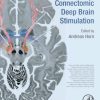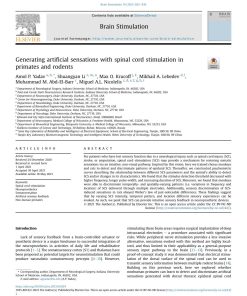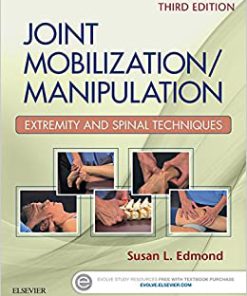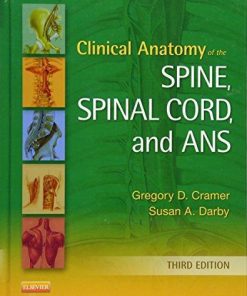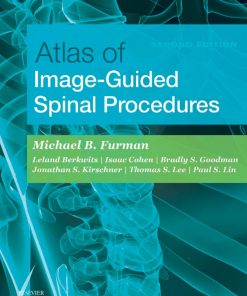(Ebook PDF) Spinal Interneurons Plasticity after Spinal Cord Injury 1st Edition by Lyandysha Zholudeva, Michael Lane 0128192615 9780128192610 full chapters
$50.00 Original price was: $50.00.$25.00Current price is: $25.00.
Spinal Interneurons Plasticity after Spinal Cord Injury 1st Edition by Lyandysha Zholudeva, Michael Lane – Ebook PDF Instant Download/DeliveryISBN: 0128192615, 9780128192610
Full download Spinal Interneurons Plasticity after Spinal Cord Injury 1st Edition after payment.
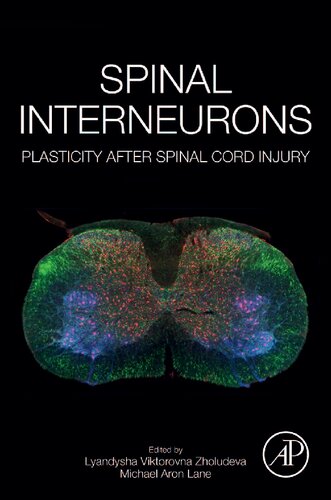
Product details:
ISBN-10 : 0128192615
ISBN-13 : 9780128192610
Author : Lyandysha Zholudeva, Michael Lane
The spinal cord is comprised of four types of neurons: motor neurons, pre-ganglionic neurons, ascending projection neurons, and spinal interneurons. Interneurons are neurons that process information within local circuits, and have an incredible ability for neuroplasticity, whether due to persistent activity, neural injury, or in response to disease. Although, by definition, their axons are restricted to the same structure as the soma (in this case the spinal cord), spinal interneurons are capable of sprouting and rewiring entire neural circuits, and contribute to some restoration of disrupted neural communication after injury to the spinal cord (i.e., “bypassing the lesion site).
Spinal Interneurons Plasticity after Spinal Cord Injury 1st Table of contents:
Section I. Spinal interneurons — motor and sensory neuronal networks
Chapter 1. The neuronal cell types of the spinal cord
Introduction
History of research on spinal cord neurons
Classification systems for spinal cord interneuron cell types
The dorsal horn neurons of the spinal cord
The ventral horn neurons of the spinal cord
Future directions for understanding spinal cord neuron types
Abbreviations
Chapter 2. Identified interneurons contributing to locomotion in mammals
Introduction
Organization of spinal locomotor interneurons
Spinal interneurons with locomotor functions
Transcription factor code to identify interneuron populations
Interneurons in a locomotor framework
Plasticity of interneurons following spinal cord injury
Future perspectives
Abbreviations
Chapter 3. Decoding touch: peripheral and spinal processing
Introduction
Part I: detecting touch
What do cutaneous sensory neurons look like?
The incredible heterogeneity of somatosensory neurons
A quick sense of touch: Aβ fibers
Touch encoding by skin sensory neurons: an integrative view
Part II: processing touch information in the spinal cord
Touching the spinal cord: LTMR inputs to the dorsal horn
The middlemen: neurons of the dorsal horn
Interneurons: more than a relay station
Projection neurons: sending a message to the brain
The spinal circuits of touch
Interneurons involved in touch perception
Projection neurons involved in touch perception
LTMR circuits, what do they do?
Touch influences the way we move and recover from spinal cord injury
Cutaneous input modulates motor output
Interneurons involved in touch-motor circuits
Touch and motor recovery
Future challenges and direction in unraveling spinal LTMR circuits
Abbreviations
Chapter 4. Spinal interneurons and pain: identity and functional organization of dorsal horn neurons in acute and persistent pain
Introduction
Molecular organization of the dorsal horn
Lamina I
Lamina II
Laminae III–IV
Acute pain signaling
Spinal projection neurons in acute pain
Lamina I projection neurons
Laminae III–V projection neuron
Spinal interneurons
Laminae I–II interneurons
Laminae III–V interneurons
Spinal mechanisms of chronic pain
Superficial SDH interneuron subpopulations and chronic pain
Lamina II interneurons and chronic pain
Somatostatin lineage interneurons
Dynorphin interneurons
Protein kinase C gamma interneurons
Calretinin interneurons
Laminae III–IV interneurons and chronic pain
Neuropeptide Y interneurons
Parvalbumin interneurons
Transient VGLUT3 interneurons
Cholecystokinin interneurons
Early receptor tyrosine kinase interneurons
Conclusions
Abbreviations
Chapter 5. Cholinergic spinal interneurons
Introduction
Conclusions
List of abbreviations
Chapter 6. Spinal interneurons, motor synergies, and modularity
Introduction
The comparative neuroethology and evolutionary perspective on synergy
Neuromechanics perspectives on motor synergies
Neuroengineering with spinal interneuron systems
Discussion and conclusions
Abbreviations
Section II. Spinal interneurons — a role in injury and disease
Chapter 7. Propriospinal neurons as relay pathways from brain to spinal cord
Introduction
Direct and indirect pathways from the brain to spinal cord motor neurons
Spinal interneurons propagate locomotor commands from supraspinal locomotor regions
Dormant relay pathways after SCI: formation of maladaptive plasticity in injured spinal cord
Therapeutic strategies for SCI: utilizing spinal interneurons
Concluding remarks
Abbreviations
Chapter 8. Changes in motor outputs after spinal cord injury
Introduction
Mechanisms of motor outputs following injury
Concluding remarks
Abbreviations
Chapter 9. Spinal interneurons and breathing
Introduction
Spinal interneurons integrated into respiratory networks
Spinal respiratory networks
Phrenic motor circuit
Intercostal motor circuitry
Abdominal motor circuitry
SpINs and their role in neuroplasticity
Respiratory SpINs following spinal cord injury
Respiratory SpINs and degenerative disease
Future perspectives
List of abbreviations
Chapter 10. Spinal interneuronal control of the lower urinary tract
Introduction
Spinal interneurons and micturition
Distribution of spinal interneurons involved in micturition reflex circuitry
Role of spinal interneurons in micturition function
Plasticity of spinal interneurons following SCI
Targeting interneurons for LUT therapeutics
Concluding remarks
Abbreviations
Conflicts of interest
Chapter 11. Spinal interneurons and autonomic dysreflexia after injury
Introduction—characteristics of spinal cord interneurons
Properties of interneurons related to autonomic function
Role of interneurons in autonomic dysfunction after spinal cord injury
Autonomic interneuronal plasticity in relation to autonomic dysreflexia after spinal cord injury
Conclusion
Abbreviations
Chapter 12. Human spinal networks: motor control, autonomic regulation, and somatic-visceral neuromodulation
Introduction
The discovery of complex human spinal cord circuitry
The role of sensory processing in control of human locomotion
Neuromodulation for motor control
Translation to therapeutics and future directions
Abbreviations
Chapter 13. Spinal interneurons post-injury: emergence of a different perspective on spinal cord injury
Introduction
Role of spinal networks in coordinating movements
Progress in spinal stimulation facilitating recovery of locomotor function
Mechanisms of recovery of locomotor function
Dynamics of spinal networks
Chapter 14. A “Unified Theory” of spinal interneurons and activity-based rehabilitation after spinal cord injury
Introduction
Abbreviations
Chapter 15. Spinal interneurons and cell transplantation
Introduction
Neural transplantation: lessons learned from preclinical models
Differentiation and transplantation of human spinal cord neurons
Conclusion: the future of clinical transplantation approaches for SCI
Abbreviations
Chapter 16. Spinal interneurons and cellular engineering
Introduction
Delivery of genetic material
Genomic integration methods
Conditional gene expression
Neuromodulation through optogenetic, sonogenetic, or chemogenetic means
People also search for Spinal Interneurons Plasticity after Spinal Cord Injury 1st:
spinal interneuron
spinal interneurons function
spinal inhibitory interneurons
spine interneurons
a spinal nerve contains
Tags:
Spinal Interneurons,Plasticity,Spinal Cord,Lyandysha Zholudeva,Michael Lane
You may also like…
Medicine



